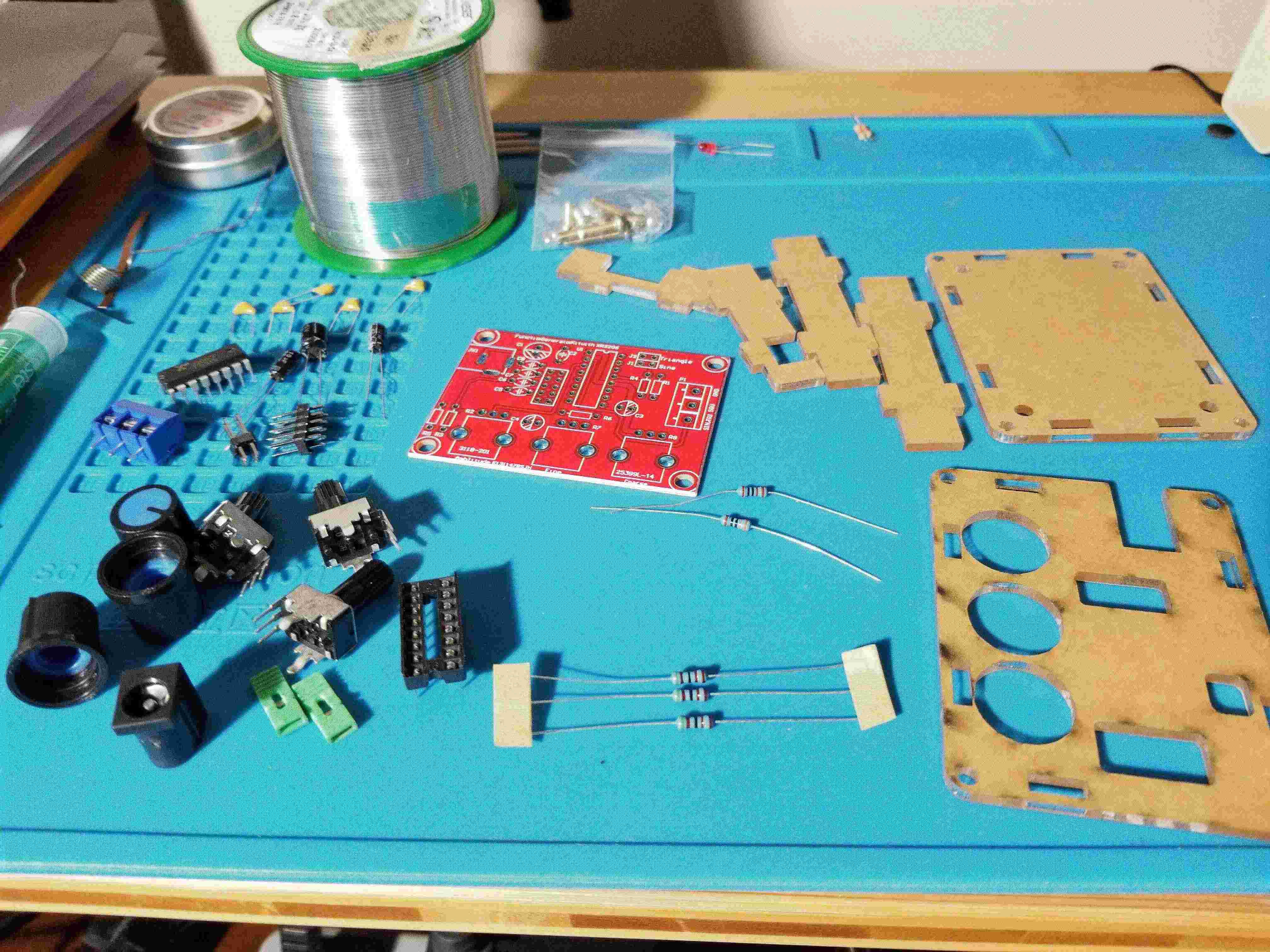
Sat 08/15/20 10:16:57 pm
Categories:
Electronics
The next kit I worked on was a signal generator. In fact, I built two versions of it. This is also the perfect post to introduce my new oscilloscope.
After I finished the European Siren Kit I built a signal generator kit based on the XR2206 IC. (This is good coincidence since I also need to use the XR2206 in an upcoming project.) There are several versions of this kit on the market. I don’t know who the original manufacturer was, nor whether the one I got was an original or a clone. I chose it because it had the most reviews, most of which were positive, and it was about twice the cost of others so I hoped it had higher quality.
Here is the kit before assembly:

Here is the assembled kit:
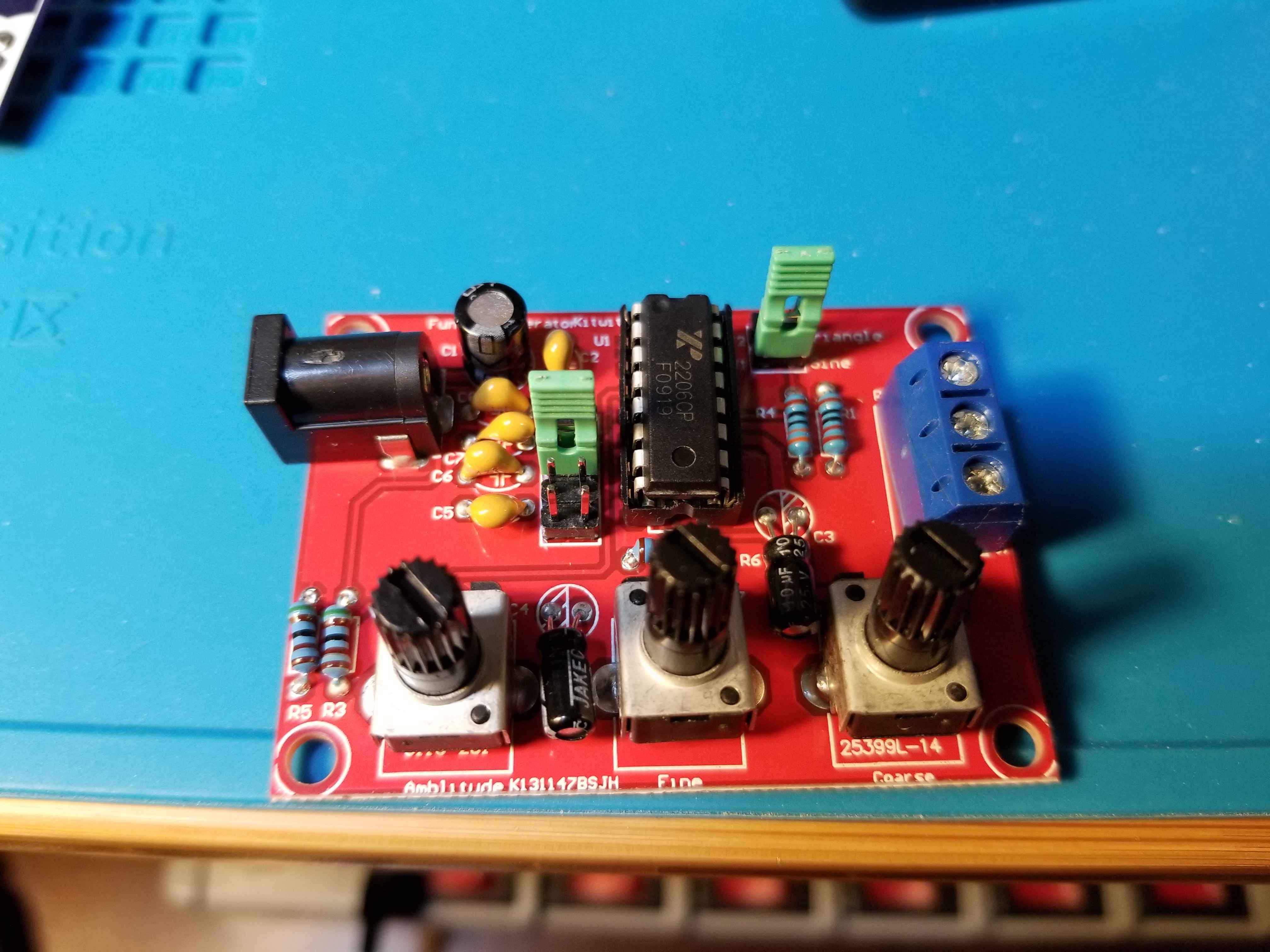
Here are the solder joints:
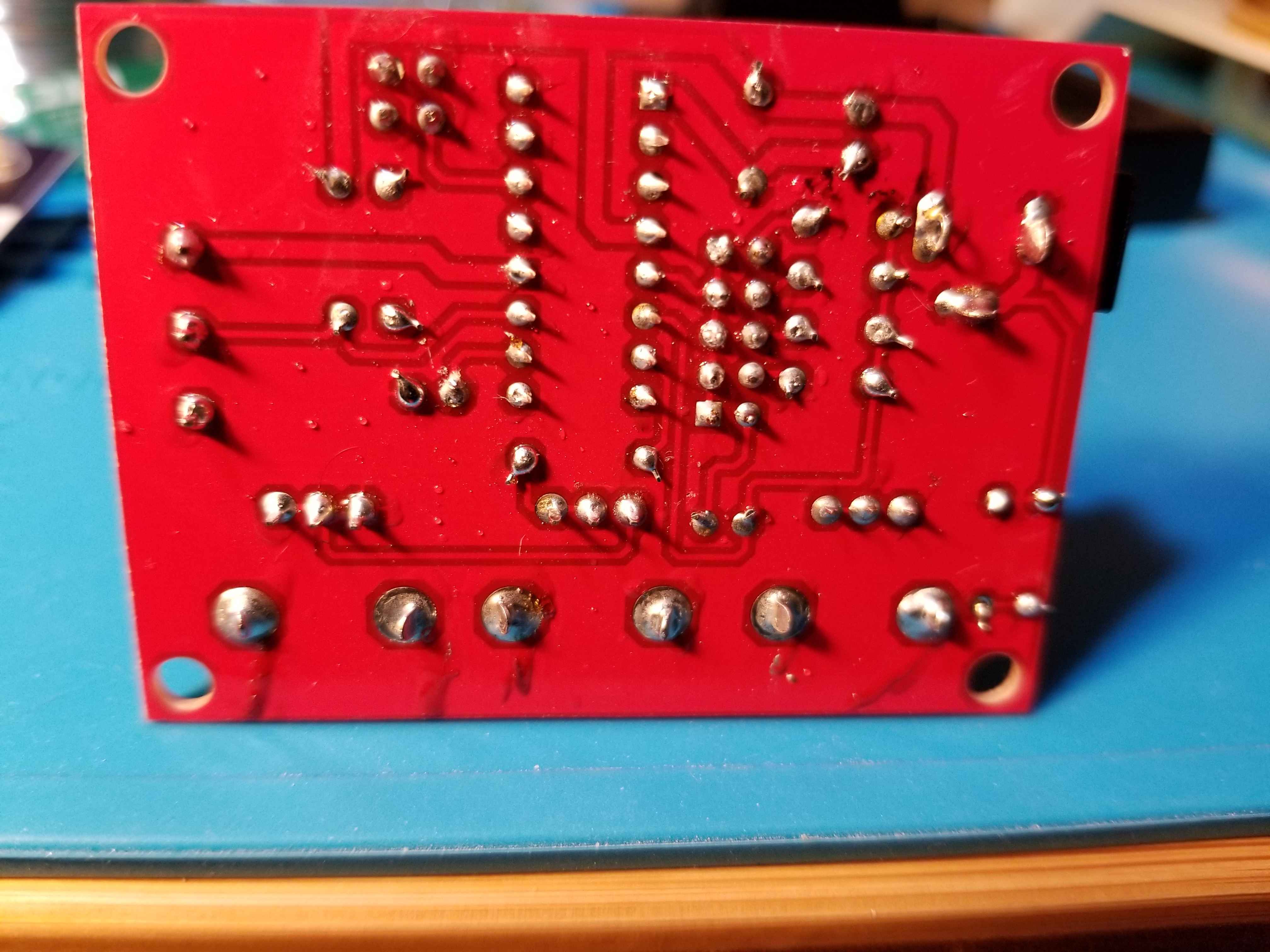
There was a spot (upper right) where I thought I might have burned through the mask and shorted the board. Otherwise the joints looked good. Based on my previous experience with Tin-Copper lead free solder I wanted to use it again. I decided to try Kester K100LD Tin-Copper solder with no clean flux (the large spool visible in the first picture). It was not as shiny as the solder which came with the European Siren Kit, but it was shinier than the SAC 305. It was easier to use than the SAC 305, though not as easy as the previous Tin-Copper solder. I did some research and discovered the K100LD is doped with Nickel and Bismuth to give it better fluidity and surface tension. Maybe I’ll find it easier to work with as my technique improves.
Unfortunately the signal generator did not work. After spending a few hours troubleshooting and reading reviews I had three theories:
Rather than spend any more time trying to figure this out I decided to simply order another kit and try again. The next one was from a different manufacturer and about half the cost of the first one: I figured if it might come from a bad batch anyway I might as well get a possible clone.
I previously ordered a narrow beveled T-18 C1 soldering iron tip because I want to try SMD soldering by hand at some point. Since the signal generator circuit board had some close joints I decided to use the T-18 C1 tip for the second kit. I also wanted Tin-Copper solder similar to the first one I used. (I could get another small spool of the exact same wire, but I wanted a large spool to last a while.) I found a Lead Free Sn 99.3% Cu 0.7% Rosin Core solder wire with a diameter of 0.6mm. I thought the smaller diameter would be easier to use on the close joints.
Here are the joints on the second kit:
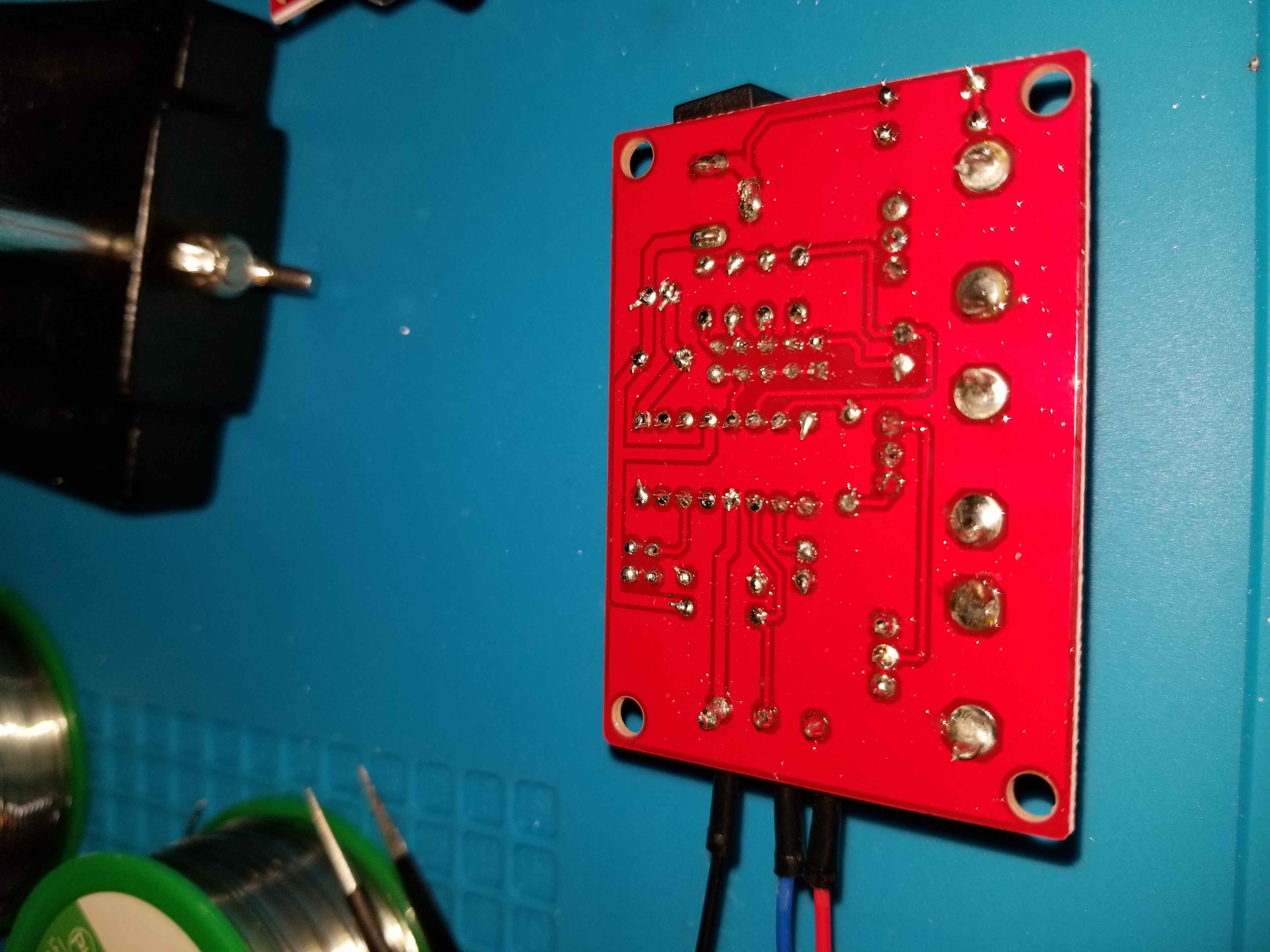
While the C1 tip and 6mm wire were easier to fit in tighter spaces I had a harder time getting the solder to melt. Overall the joints and the board look good.
The second kit worked!
Here is a sine wave from the second kit (on bottom) measured with my new oscilloscope:
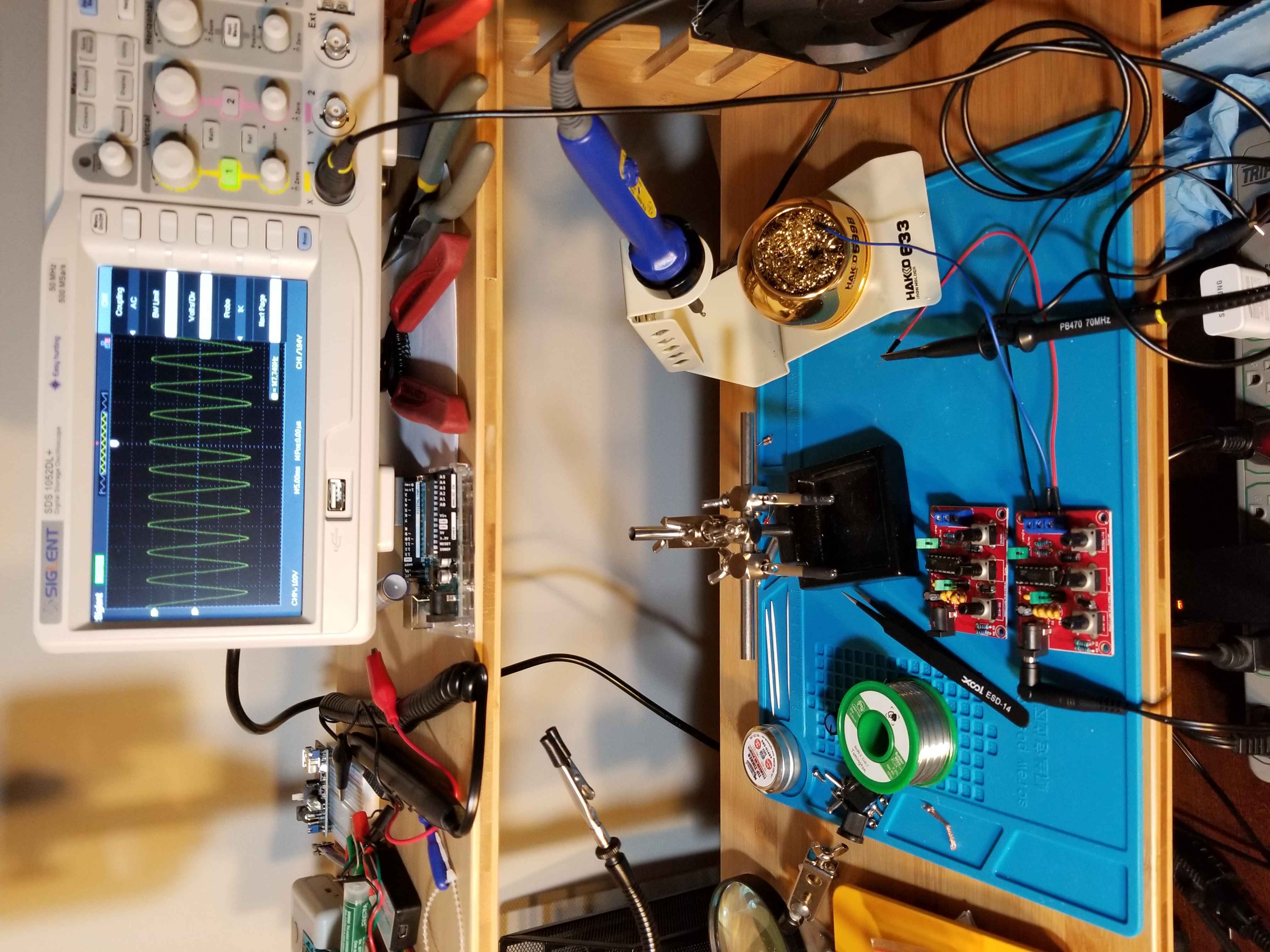
Here is a triangle wave:
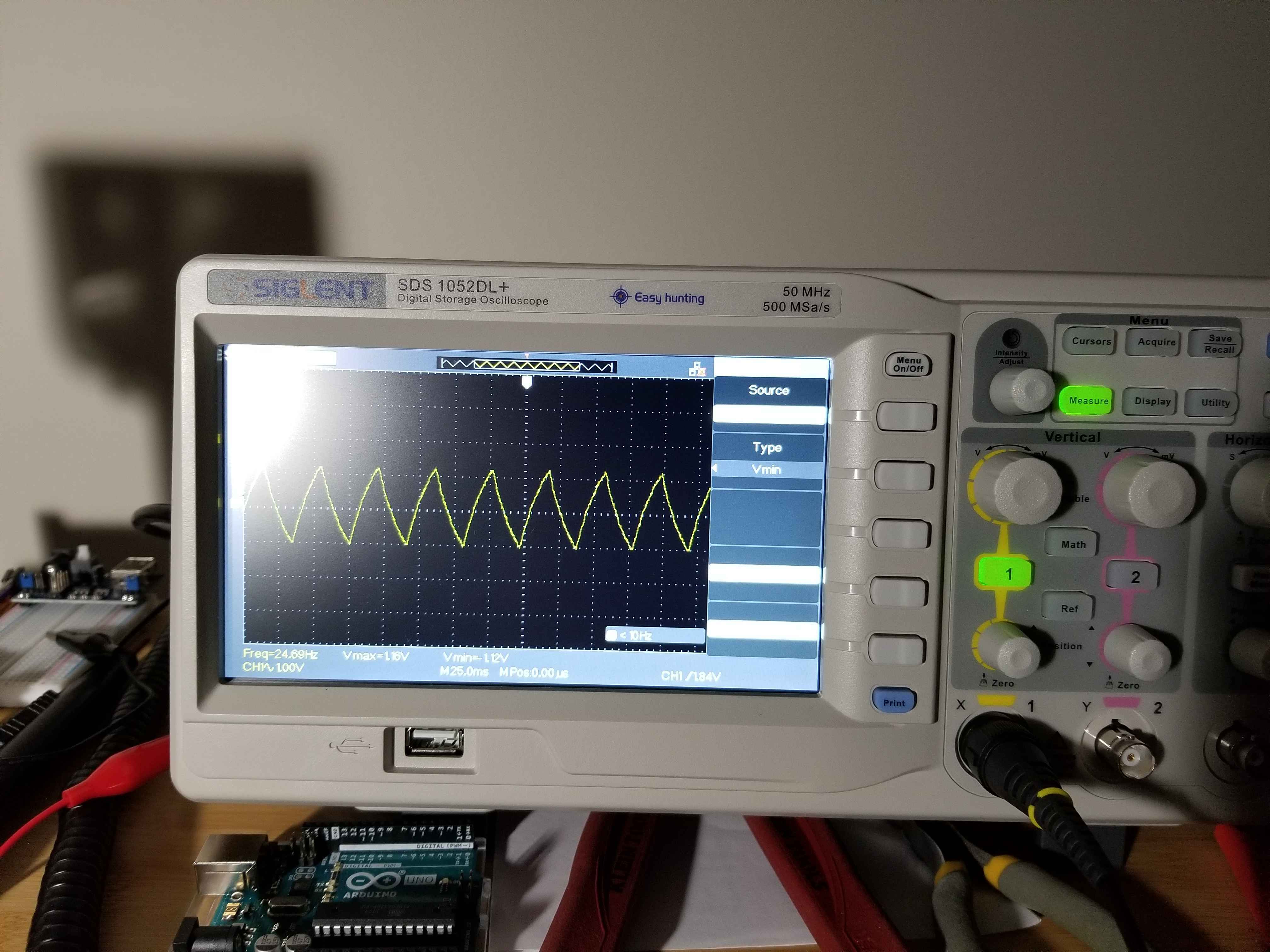
I got this oscilloscope a few months ago. Though the little oscilloscope I started with is good enough for my edrums projects, I am going to start some more complicated electronics projects. The new oscilloscope has better accuracy, higher precision, two channels, a better interface, and provides more functions. For example, here is a simultaneous measurement of the square and sine waves from the signal generator:
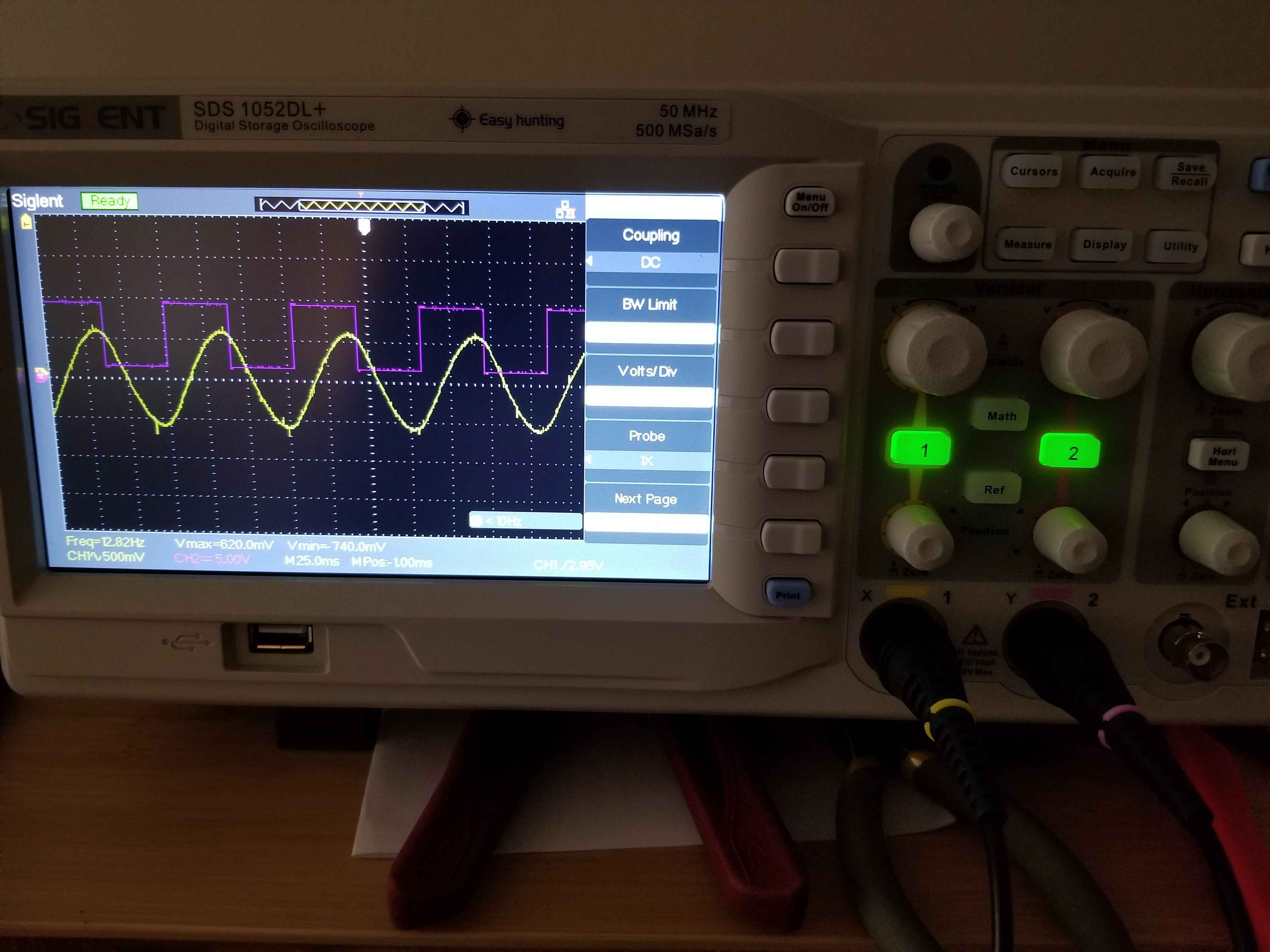
Once I had a working kit, and therefore had a working IC, I swapped the ICs to test the first kit:
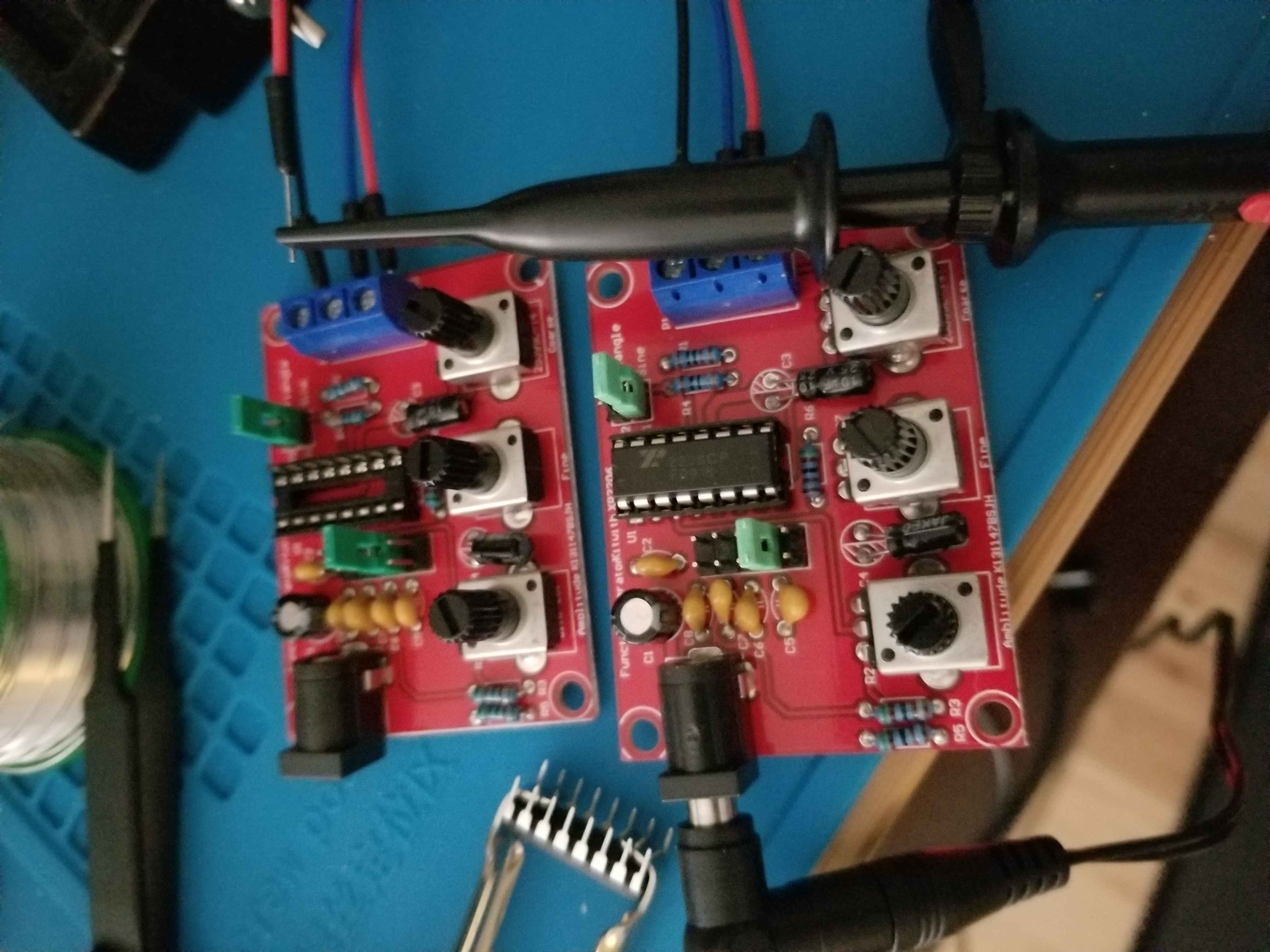
With a functioning IC the first kit worked! Here it is (on the bottom) generating a sine and square wave:
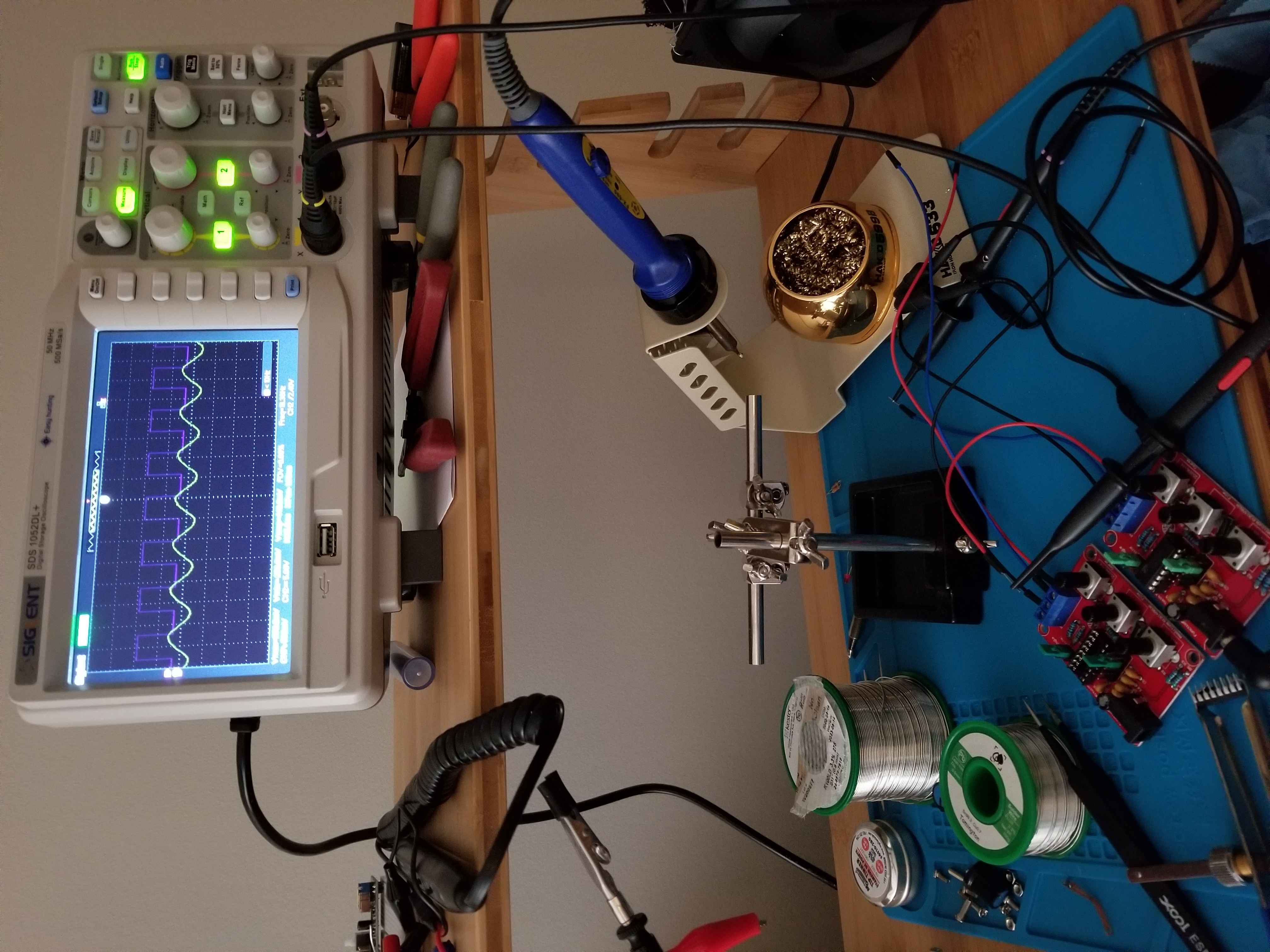
It turns out my soldering work was fine.
As I mentioned above, I am using an XR2206 IC for an upcoming project. I ordered two chips because the cost of one was about equal to the shipping cost, but adding a second chip qualified the order for free shipping. Since I had a spare XR2206 I put it in the second signal generator kit:
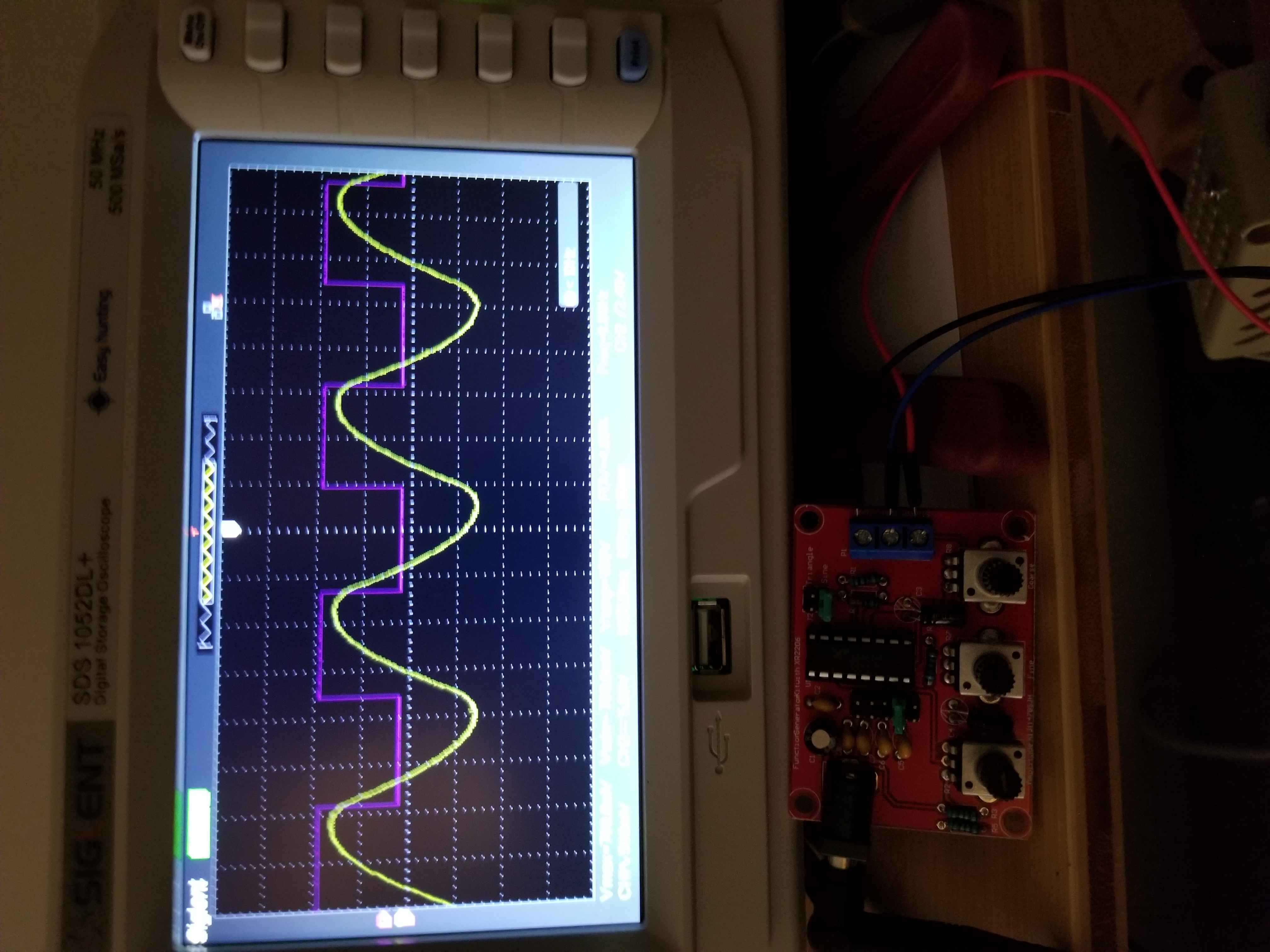
Though the second IC is working fine, now I also have a signal generator with a genuine IC.
Finally, the signal generators complete with cases:
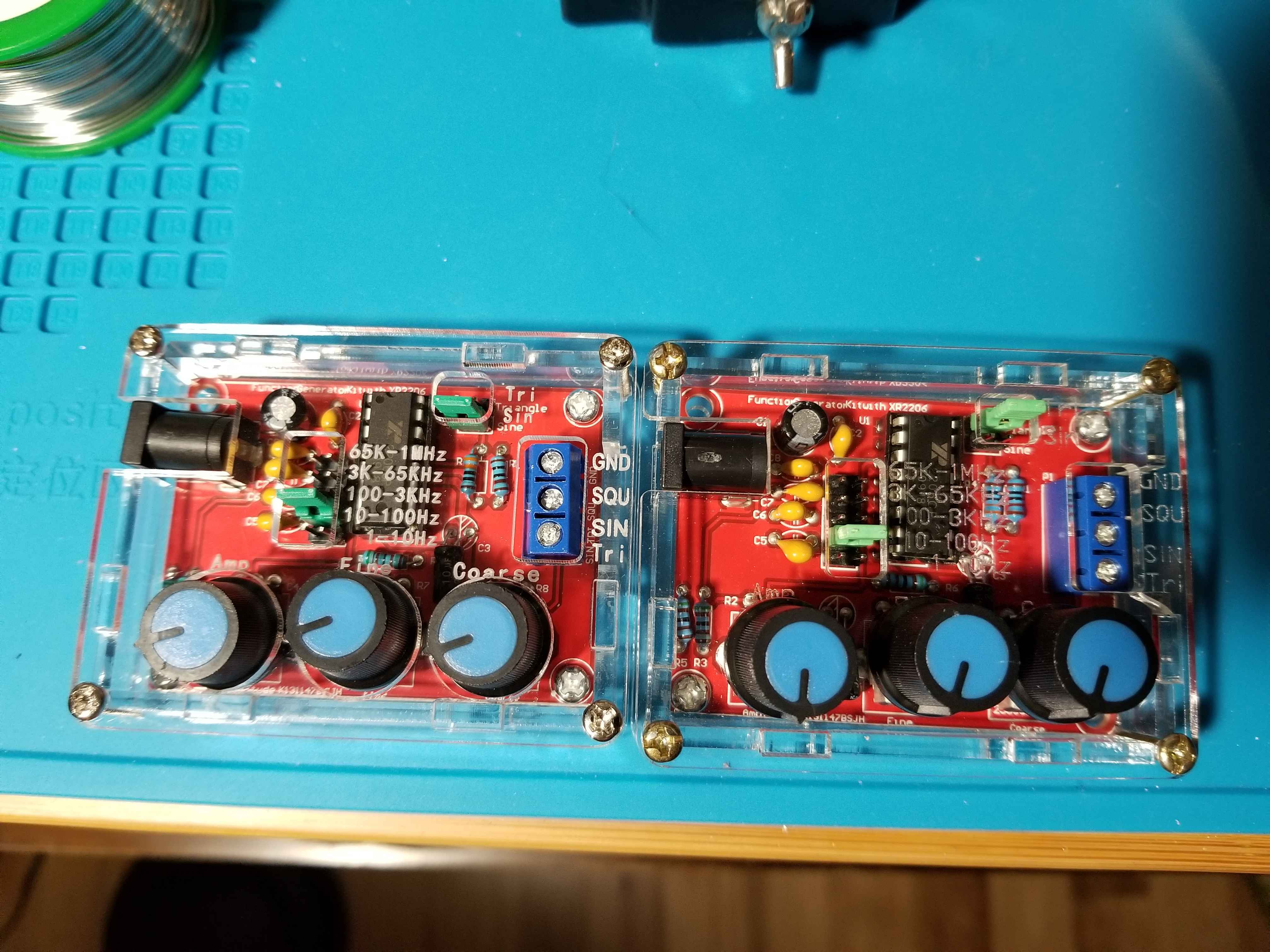
I’m glad I got the extra practice from building two of these.
subscribe via RSS